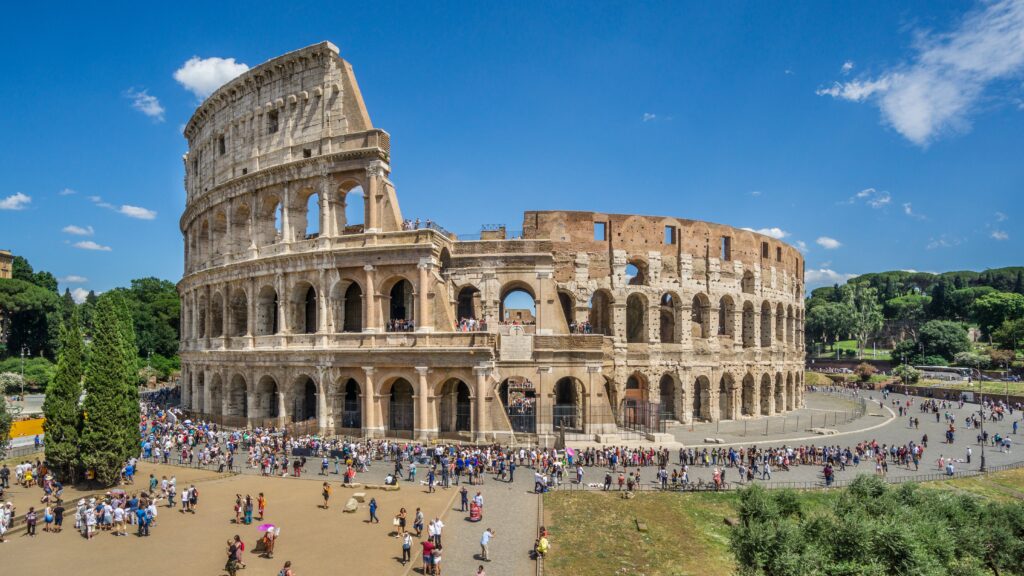Introduction to the Colosseum
Located in Rome, Italy, the Colosseum is the most iconic landmark in the city. Built in the year 72 AD, the Colosseum was the largest amphitheater ever constructed in the Roman Empire. It was used for gladiator fights, public spectacles and other forms of entertainment, and is a testament to the engineering prowess of the ancient Romans. The Colosseum is oval in shape, measuring 189 metres long and 156 metres wide, and is composed of four tiers with a capacity of over 50,000 spectators.
Architectural Features of the Colosseum
The Colosseum is an architectural marvel, designed with a number of unique features. The exterior of the building is made up of three levels of arches, each supported by columns. These arches allow for air to circulate through the amphitheater, keeping the spectators cool during the hot Roman summers. The Colosseum also has a series of underground tunnels and chambers, which were used to store animals, props and other materials used in the spectacles.
The interior of the Colosseum is equally impressive. The three levels of arches are connected by a series of stairways, and the walls of the amphitheater are decorated with reliefs and sculptures. The Colosseum also has an elliptical arena, measuring 87 metres long and 55 metres wide. The arena contained a wooden floor, which could be flooded with water for mock naval battles.
History of the Colosseum
The Colosseum was commissioned by Emperor Vespasian in 72 AD, and construction was completed in 80 AD. The amphitheater was used for gladiator fights, public spectacles and other forms of entertainment. It was also used as a site for executions and public punishments. The Colosseum continued to be used for these purposes for over 500 years, until it was eventually abandoned in the 6th century AD.
The Colosseum has since been damaged by earthquakes, fire and vandalism, but much of the structure remains intact. It has become a symbol of the Roman Empire, and is one of the most popular tourist attractions in Rome. In 1980, the Colosseum was added to the UNESCO World Heritage List, and it continues to draw millions of tourists each year.
Conclusion
The Colosseum is one of the most impressive architectural feats of the ancient world. Its impressive design, fascinating history and iconic status make it a must-see destination for any traveler. From its intricate arches to its elliptical arena, the Colosseum is a true testament to the engineering prowess of the ancient Romans, and is sure to amaze any visitor.

